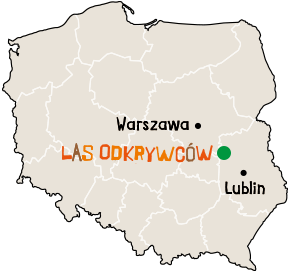A few words about an ant’s home
Ants build various types of nests using soil and different parts of plants. They build nests above ground, below ground, in dead trees and in living ones too.
Nests built by Formica ants can be quite large in size, as they can exceed one meter in height and even 2–3 meters in width. The outer layer of these anthills, which can be up to 20 cm thick, is made of leaves, needles, grass and sand cemented together, which promotes water retention. If you were to peek inside, you would see a several dozen centimeter long layer of twig fragments. The main part of the ant hill is often an old tree stump or root, under which you can find a mix of partially decomposed organic matter and sand. Additionally, at the very bottom of the nest, you can find chambers that have been carved into the ground that serve as shelter for ants in the winter.
In an underground nest, you can find many irregularly arranged chambers, often connected to one another by carved pathways. These nests are built by ants of the following genuses: Myrmica, Tetramorium and Lasius. Yellow meadow ant (Lasius flavus) nests are often overgrown with plants, such as thyme. Army ants are known for building mobile nests, meaning that they can build “living” bridges.
Worker ants of this genus, use their bodies to build chains and nets in order to protect the queen and her larvae. Every night, these ants build nests in different places, such as near tree trunks. Fascinating, isn’t it?
Did you know that…
The mounds of an anthill are under constant construction. Worker ants are constantly cleaning their nests and moving around twigs and needles in order to prevent mold growth.
Jump into our ant maze and feel like an ant!

